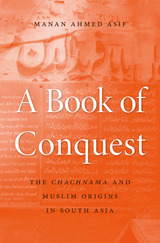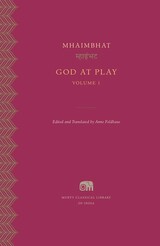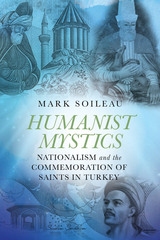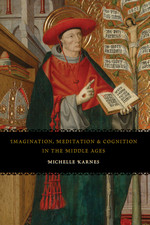
The question of how Islam arrived in India remains markedly contentious in South Asian politics. Standard accounts center on the Umayyad Caliphate’s incursions into Sind and littoral western India in the eighth century CE. In this telling, Muslims were a foreign presence among native Hindus, sowing the seeds of a mutual animosity that presaged the subcontinent’s partition into Pakistan and India many centuries later.
But in a compelling reexamination of the history of Islam in India, Manan Ahmed Asif directs attention to a thirteenth-century text that tells the story of Chach, the Brahmin ruler of Sind, and his kingdom’s later conquest by the Muslim general Muhammad bin Qasim in 712 CE. The Chachnama has long been a touchstone of Indian history, yet it is seldom studied in its entirety. Asif offers a close and complete analysis of this important text, untangling its various registers and genres in order to reconstruct the political vision at its heart.
Asif challenges the main tenets of the Chachnama’s interpretation: that it is a translation of an earlier Arabic text and that it presents a history of conquest. Debunking both ideas, he demonstrates that the Chachnama was originally Persian and, far from advancing a narrative of imperial aggression, is a subtle and sophisticated work of political theory, one embedded in both the Indic and Islamic ethos. This social and intellectual history of the Chachnama is an important corrective to the divisions between Muslim and Hindu that so often define Pakistani and Indian politics today.


The oldest extant Marathi work, a medieval chronicle of Chakradhar’s divine life on earth, in a new English translation.
God at Play, or Līḷācaritra, is a remarkable biography of the medieval religious figure Chakradhar Svami. His followers, called Mahanubhavs, understand him to be a divine incarnation of Parameshvar. Mhaimbhat, a Brahmin goldsmith who became one of Chakradhar’s most important followers, compiled this astonishingly down-to-earth religious text around 1278. It records not only Chakradhar’s ethical and theological teachings, but also his everyday activities, including the foods he ate and the people he met. This rich, detailed account provides insights into economic conditions, political history, and society in medieval India. Manuscripts of the work were carefully preserved within the Mahanubhav community and were not known to outsiders until the early twentieth century.
The first volume of God at Play describes Chakradhar’s early life, his wanderings as a lone ascetic, and the gathering of the disciples who later accompany him on his travels.
This new English translation of Līḷācaritra is accompanied by an emended Marathi text, based on Hari Narayan Nene’s edition, in the Devanagari script.

Humanist Mystics is the first book to examine Islam and secularism within Turkish nationalist ideology through the lens of commemorated saints. Soileau surveys Anatolian and Turkish religious and political history as the context for his closer attention to the lives and influence of these three Sufi saints. By comparing premodern hagiographic and scholarly representations with twentieth-century monographs, literary works, artistic media, and commemorative ceremonies, he shows how the saints have been transformed into humanist mystics and how this change has led to debates about their character and relevance.



READERS
Browse our collection.
PUBLISHERS
See BiblioVault's publisher services.
STUDENT SERVICES
Files for college accessibility offices.
UChicago Accessibility Resources
home | accessibility | search | about | contact us
BiblioVault ® 2001 - 2024
The University of Chicago Press









